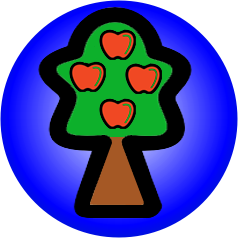|
 |
In African traditional medicine sycomores have many uses. The bark is used to treat coughs, and throat and chest diseases and the milky latex for treatment of dysentery and chest diseases, or is applied to inflamed areas. Sycomore leaves are said to be effective against jaundice and as an antidote for snakebite, while the roots have laxative and anthelmintic properties. Modern research has found that sycomore bark-root extracts have a sedative effect and could be a possible source of sedative or anesthetic drugs.
Top
|
|
|
|

|
Pliny the Elder described the sycomore in his book, Natural History, noting that Egypt has varieties of trees not found elsewhere – first and foremost the sycomore, which for this reason, is called the Egyptian fig. He then goes on to describe how the fig produces its fruit not on branches but on the trunk itself, and the Egyptian variety is exceptionally sweet and seedless. However it only ripens after incisions have been made in the fruit. Three days after the incision is made the fruit can be picked, while another fig is formed beneath it. In this manner the tree can produce seven crops of juicy figs in one summer. This is probably what the prophet Amos meant when he described himself as a dresser (piercer) of sycomore-trees, Amos, 7, 14.
|
|
|
|
|
Mature sycomore fruits can be eaten fresh or stewed. They can also be use to prepare an alcoholic beverage. Sycomores serve as fodder in semi-arid trees where they occur naturally, and their fruit are eaten by domesticated and wild animals.
Top |
|
|
 |
Sycomores are very long lived, but we do not know exactly how long, because like other tropical trees it does not produce annual rings that allow a tree’s age to be determined accurately. Nevertheless there are a number of very old trees, among them one in Netanya, which was sketched by Sir Charles William Wilson of the British Royal Engineers, who surveyed the Land of Israel in the mid-19th century. Already then the tree appears large and very ancient. Wilson recounted that he met watermelon merchants from the area resting in the shade of this tree. |
|
|
|
|
The false sycomore, like its close relative the fig, requires the presence of a specific symbiotic wasp to produce seeds, although it can also produce fruit by asexual reproduction, a process called parthenocarpia. As Israel is not part of its natural range, the wasp is absent here and the tree is propagated only by cuttings. |
|
|
|
|
Sycomore wood is a good source of firewood and charcoal and the inner part of its roots are used as weaving fiber.
Top |
|
|
|
|
 |
Sycomores were introduced into Israel long ago, probably as long as 6500 years ago, and possibly even 10,000 years ago. It was planted for its shade and its fruit, although the latter is not considered of very high quality. Its wood was used in construction and for heating. In ancient Egypt it was also used for coffins. In Israel doors of an ancient synagogue were found to be of sycomore and about a tenth of all the wooden remains found at Masada from the Roman Period were made of sycomore. |
|
|
|
|
|
Sycomores are mentioned in a number of ancient Jewish sources to denote the geography of Israel: “Sycomores are a sign of the coastal plain” (Tosefta Sheviit 87: 6); “The area where sycomores do not grow is the Upper Galilee … The area where sycomores do grow is the Lower Galilee” (Sheviit 89: 42); “Sign of the coastal plain – sycomores” (Pesachim 53, see also Jerusalem Talmud Berhakot 89)
Top |
|
|
|
|
 |
Pictures |
